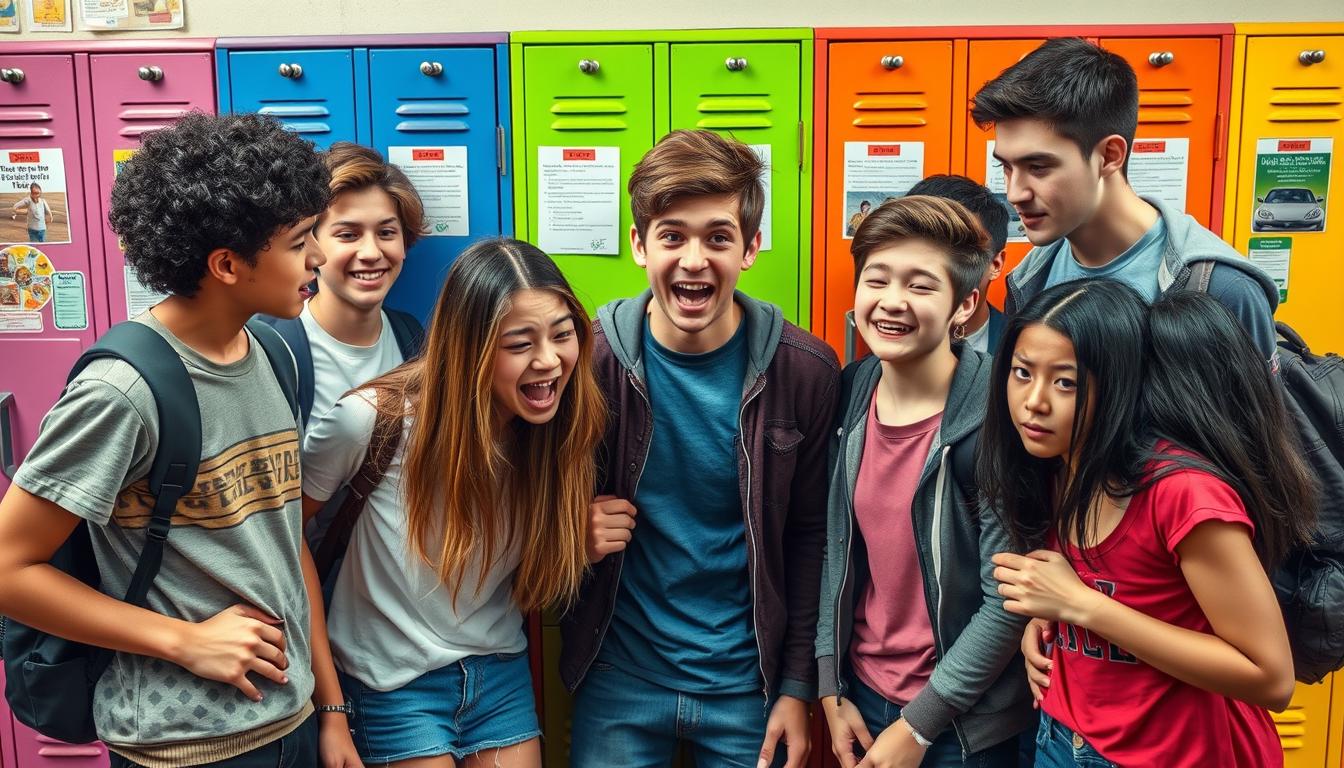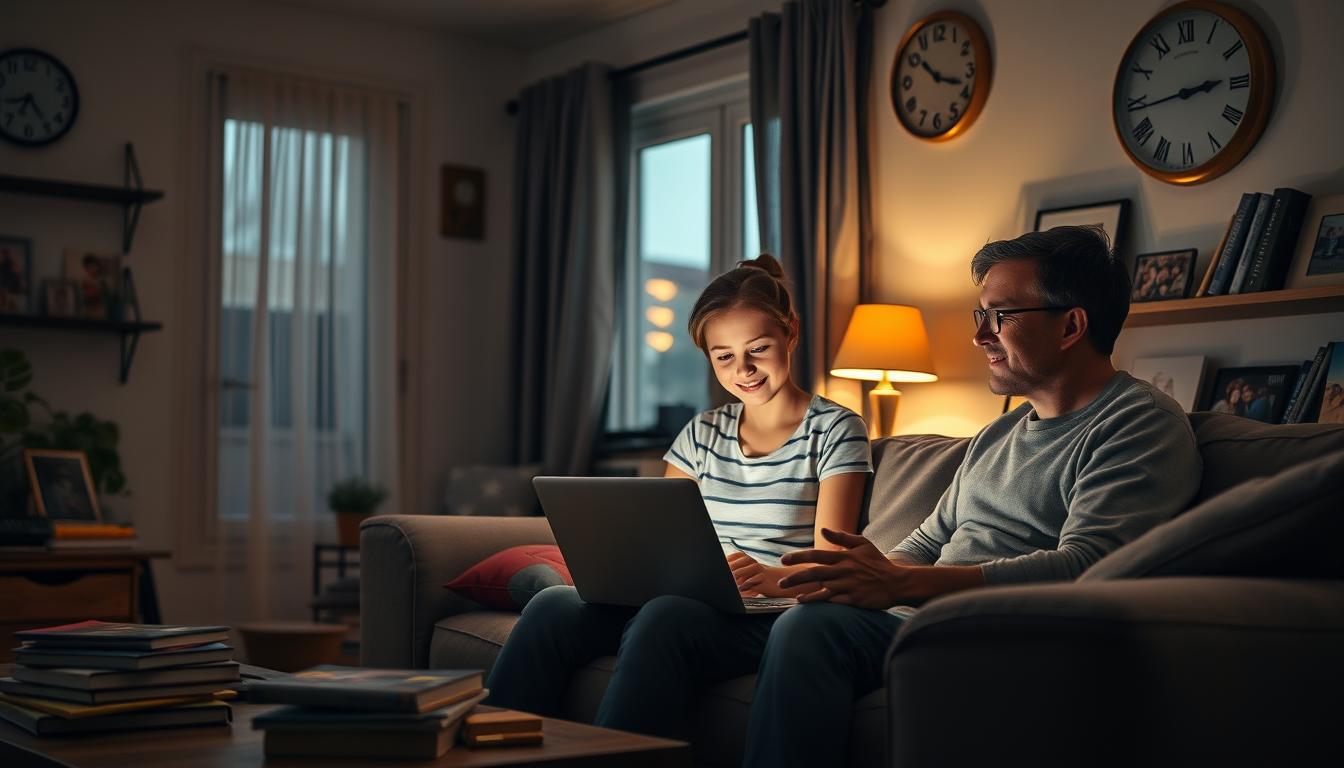Adolescence is a time when peer influence greatly shapes behavior and growth. I’ve seen how teens move through complex social scenes. Here, peer pressure can be both tough and changing.
It’s key to grasp how peer influence affects teens. It helps them form their identity, make choices, and connect with others. Growth in teens isn’t just physical; it’s also about the mind’s response to social interactions.
Teens are very aware of group dynamics and wanting to be accepted. The need to belong can lead to big changes in behavior. Sometimes, it pushes them to do things they’re not comfortable with.
Key Takeaways
- Peer pressure significantly impacts teenage decision-making
- Social acceptance drives behavioral adaptations
- Adolescents are more vulnerable to group influences
- Understanding peer dynamics helps support healthy development
- Individual resilience can mitigate negative peer influences
Understanding Peer Pressure in Adolescence
Adolescence is a time of big changes in social and psychological areas. Peer influence is key in shaping teens’ behaviors and choices.
Teens often face the challenge of social conformity. This can deeply affect their choices and growth.
Different Types of Peer Influence
- Direct Pressure: Explicit requests or suggestions from peers
- Indirect Pressure: Subtle social cues and unspoken expectations
- Normative Influence: Desire to fit in and be accepted by the group
The Psychology Behind Social Conformity
Humans are naturally social. The need to belong is strong, even more so in teens. Research shows two main reasons for social conformity:
- Informational influence: Believing others know something we don’t
- Normative influence: Wanting to be liked and accepted
“Fitting in is a powerful psychological drive that can override individual judgment.” – Dr. Sarah Thompson, Adolescent Psychology Researcher
Why Teens Are More Susceptible to Peer Pressure
Teen brains are developing, making them more open to peer influence. The part of the brain that helps with decisions isn’t fully grown until 25. This makes teens more likely to choose social approval over thinking things through.
Knowing about these factors can help parents, teachers, and teens deal with social pressures during this important time.
The Role of Peer Pressure on Adolescent Behavior

Peer pressure is a big deal in shaping how teens act. It creates complex situations that can really sway a teenager’s choices and growth. It’s key for parents, teachers, and teens to grasp how peer influence works.
Teens often take risks because of peer pressure. They are very open to social pushes that might lead them to unsafe actions. These pushes can show up in many ways:
- Trying out drugs
- Doing risky physical stunts
- Creating dangerous social media challenges
- Acting out in aggressive or bad ways
Adolescents crave social approval. This need can make them ignore their better judgment, leading them to make choices they might not make alone.
“Peer pressure is not just about saying yes or no – it’s about understanding the complex social dynamics that influence teenage behavior.” – Dr. Sarah Mitchell, Adolescent Psychology Researcher
Studies show how big of a role peer influence plays in teen behavior. Here’s some data on teen risk-taking:
| Behavior Type | Influenced by Peers (%) | Individual Decision (%) |
|---|---|---|
| Substance Experimentation | 73% | 27% |
| Risky Social Media Challenges | 65% | 35% |
| Aggressive Behavior | 58% | 42% |
Not all peer pressure is bad. Good peer influences can push teens to do well in school, help out in the community, and learn healthy social skills. The trick is to understand and manage these complex social interactions.
Impact of Peer Influence on Teen Decision-Making
Teenage years are a key time for growth, where friends greatly shape choices and actions. Knowing how friends affect decisions can aid parents and teachers in guiding teens through tough times.
Risk-Taking Behaviors and Group Dynamics
Teens are more likely to take risks when with friends. The need to belong can lead to quick, risky decisions that might harm them. Friend groups can change how a teen thinks and feels.
- Increased likelihood of dangerous activities
- Reduced personal risk assessment
- Amplified emotional responses
Social Media’s Role in Modern Peer Pressure
Social media has changed how teens face peer pressure. Online, they constantly compare and seek approval. Online interactions now play a critical role in shaping adolescent perceptions and behaviors.
“Digital connections have become the new social currency for teenagers” – Dr. Sarah Reynolds, Youth Psychology Researcher
Academic Choices and Peer Influence
Friends can also affect how well teens do in school. Teens might change their school goals and study habits to fit in with their friends.
| Peer Influence Type | Academic Impact |
|---|---|
| Positive Peer Pressure | Motivation to achieve higher grades |
| Negative Peer Pressure | Potential decline in academic commitment |
Understanding these influences helps teens make better choices and stay true to themselves in social situations.
Positive vs. Negative Effects of Peer Relationships

Adolescent development is filled with complex peer relationships. These interactions shape a teenager’s self-esteem and social skills. While some friendships are supportive, others can lead to bullying.
Positive peer relationships bring many benefits:
- Boost in self-esteem and confidence
- Development of critical social skills
- Emotional support during tough times
- Opportunities for personal growth
But, negative peer interactions can harm a lot. Bullying and social exclusion can badly affect a teenager’s mental health and how they see themselves.
“The quality of peer relationships can make or break a teenager’s emotional well-being.” – Dr. Sarah Reynolds, Child Psychology Expert
Here are some negative impacts:
- Reduced self-confidence
- Increased anxiety and depression
- Potential long-term psychological challenges
- Risk of developing negative coping mechanisms
Knowing about these effects helps us create better environments for teenagers. By spotting warning signs and encouraging positive interactions, we can improve their mental health and development.
Building Resilience Against Negative Peer Pressure
Adolescence is a tough time that needs strong personal skills and support. Teens face many social challenges that can hurt their self-esteem and choices. Learning to be resilient is key to handling peer pressure well.

Developing Strong Self-Esteem
Having strong self-esteem helps fight off bad peer influence. When teens feel good about themselves, they’re less likely to be bullied or swayed by others. Important steps include:
- Knowing and valuing your strengths and unique qualities
- Setting achievable personal goals
- Talking positively to yourself
- Doing things that make you feel confident
“Believe in yourself and you will be unstoppable.” – Unknown
Communication Strategies for Teens
Good communication helps teens stand up for themselves and resist bad peer pressure. Getting help from parents is very important in learning these skills. It’s about:
- Talking your feelings clearly and kindly
- Saying “no” with confidence
- Finding support from trusted adults
- Knowing and respecting your own limits
Setting Healthy Boundaries
Setting personal boundaries keeps teens safe from bad social situations. Healthy boundaries act as a shield against negative peer effects. They help teens keep their individuality and self-respect.
By focusing on growing personally, communicating well, and knowing yourself, teens can overcome social hurdles. They can build lasting resilience.
The Parent’s Role in Managing Peer Influence
Understanding how to guide your teenager is key. As a parent, I know it’s important to support your teen while teaching them to resist bad peer pressure. The risk of substance abuse goes up during these years, making it vital for parents to get involved.
- Establishing open communication channels
- Creating a judgment-free environment
- Teaching critical decision-making skills
- Monitoring social interactions respectfully
“The strongest influence in a teenager’s life is often their parent’s consistent, compassionate guidance.”
Knowing about teen psychology helps parents spot signs of peer pressure. Look out for sudden changes in behavior or secretive actions. These can mean your teen is facing social issues.
| Parental Action | Potential Impact |
|---|---|
| Active Listening | Builds Trust |
| Setting Clear Expectations | Provides Behavioral Framework |
| Discussing Possible Scenarios | Prepares Teen for Challenges |
Being proactive as a parent can greatly lower the risk of dangerous teen behaviors. By making your home a supportive place, you become your teen’s best defense against bad peer influences.
Conclusion
Peer pressure plays a big role in how teens act and grow. It shows how important friends are in shaping their lives. Teens learn a lot from their peers, affecting their choices and growth.
Peer relationships do more than just hang out. They help teens figure out who they are and make decisions. They also learn to handle their feelings through friends.
Knowing how peer pressure works helps us all. Parents, teachers, and teens can work together to support each other. By talking openly, boosting self-confidence, and setting clear limits, we can guide teens to make better choices.
Peer pressure isn’t always bad. It can actually help teens grow and learn when handled right. It’s a key part of their development during these important years.



